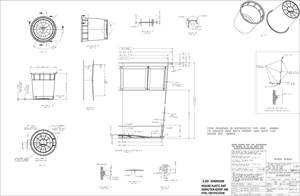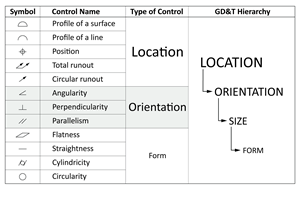Unique in Every Way
This moldmaker transformed its current processes with a multi-function, universal CAD/CAM solution.
Meeting the toolmakers at Windsor, Ontario-based Unique Tool & Gauge Inc. makes you realize that this business could not have had a better name. For more than 30 years, Unique has established itself as a leader in the automotive industry, earning a reputation for its sophisticated tooling and superior customer service. With more than 80 employees and rapidly growing, the company features a distinct combination of top-notch talent, well-run processes and state-of-the-art technology.
Turning its full attention to satisfying customers, improving efficiency and shortening delivery times, the team at Unique embarked on a search for a complete design and manufacturing software solution that could be used across all departments. Until recently, different functions throughout the shop were using several software applications to get the job done. Using a non-universal kernel required constant file translations that not only could lead to errors, but also made jobs much less efficient.
“We’d have three steps of translation and there could be four or five iterations or translations on a job. The hours really started to add up,” explains Simon Allcock, Unique’s R&D specialist.
That’s when Unique decided to look for a solution that could be used from engineering to machining. A solution that would not only facilitate the communication between departments, but also help each department become more productive in its day-to-day tasks.
“We looked at other software, but Cimatron was the only one that was really geared towards moldmaking,” Engineering Manager Joel Street says.
Allcock, Street and the rest of the Unique team quickly realized the new opportunities that opened up with Cimatron. “It’s not only the use of Cimatron throughout the shop, but the level of our automation that is probably second to none,” Street says.
Streamlining Processes
CEO Darcy King explains that each customer has a specific way it wants its tools produced. “Every customer has a standards book, which a designer must read to understand how they want their mold. If you can capture this knowledge in the system and reuse it, you are not only saving time, but you are also eliminating human error.”
“We now have these customer-specific standards set up in our catalogs, so when we get a job, we can pull that specific catalog and get a jumpstart on the design,” Street says. “Designers just drop parts into the mold base, hit a button and it sizes itself.”
“Cimatron allows us to copy a particular press and put it into our program, so the next time we build that design most of the mold is already built,” King adds. “It has probably cut our engineering hours in half. Most importantly, it is a huge step in terms of ensuring quality and customer satisfaction.”
For King, the ability to have multiple people working on the same file concurrently is very important in managing assignments. “This gives us more workforce flexibility,” he says. “Now our designers can surface, and our surfacers can design as needed. It has created a whole new way of managing our business based on the workload at any given time.”
Allcock points out that streamlined communication is another big advantage of the new software: “The younger generation is used to seeing everything in 3D, so the translation of information from person to person has become much easier across the shop. We have a color coding system in place, which shows workers a color picture of what they are going to be working on next.”
Making Tool Paths Faster and More Efficient
On the NC side of the job, Allcock finds it quite simple to generate five-axis tool paths, even for someone with no previous five-axis experience. “With the advantages of Cimatron’s Superbox, a plug-and-play acceleration device for NC programmers, we can actually program and calculate up to five tool paths per workstation at the same time,” he says. “If we have one Superbox per workstation, we can potentially calculate 30 tool paths simultaneously.”
Two other benefits of five-axis programming in Cimatron are templates and toolpath customization. “It comes in very handy for electrode making,” Allcock says. “I can define different overburns in the same tool path. Instead of having to make two programs, I can make it all in the same program and cut down the number of tool paths I generate.”
Seeing a Mold in Motion
Ensuring that complex molds will function flawlessly is another concern moldmakers face.
“For example, we were designing a mold that had a pretty complex mechanism, so we used the animation function within Cimatron to ensure it would work as expected and uncovered a small problem that we were able to correct before manufacturing,” Street notes. “The fact that we could correct the problem in such an early stage saved us a lot of time and money.”
“Seeing the mold in motion is pretty amazing, and it really gives you a sense of security,” King adds. “The next phase is sharing this information with our customers, so they can see how everything is going to run smoothly in production.”
Related Content
It Starts With the Part: A Plastic Part Checklist Ensures Good Mold Design
All successful mold build projects start with examining the part to be molded to ensure it is moldable and will meet the customers' production objectives.
Read MoreMoldMaking Technology's Most-Viewed Content 2022: Products
MMT shares the five top-viewed technologies, equipment and services of 2022 in each Engineer, Build, Maintain and Manage tenet based on Google Analytics.
Read MoreHow to Manage Wall Thickness Changes in Your Mold Design
To ensure even filling and cooling, consider wall section transitions, corners and fillets, ribs and bosses, lip and rim designs and CAE flow simulation software.
Read MoreTolerancing in Mold Design, Part 2: Using GD&T to Address Conventional Tolerancing Issues
Mold designers can achieve a single interpretation of workpiece functionality when following the American Society of Mechanical Engineers Geometric Dimensioning and Tolerancing standard.
Read MoreRead Next
How to Use Continuing Education to Remain Competitive in Moldmaking
Continued training helps moldmakers make tooling decisions and properly use the latest cutting tool to efficiently machine high-quality molds.
Read MoreAre You a Moldmaker Considering 3D Printing? Consider the 3D Printing Workshop at NPE2024
Presentations will cover 3D printing for mold tooling, material innovation, product development, bridge production and full-scale, high-volume additive manufacturing.
Read MoreHow to Use Strategic Planning Tools, Data to Manage the Human Side of Business
Q&A with Marion Wells, MMT EAB member and founder of Human Asset Management.
Read More_970x90 4.png;maxWidth=970;quality=90)











_300x250 1.png;maxWidth=300;quality=90)













